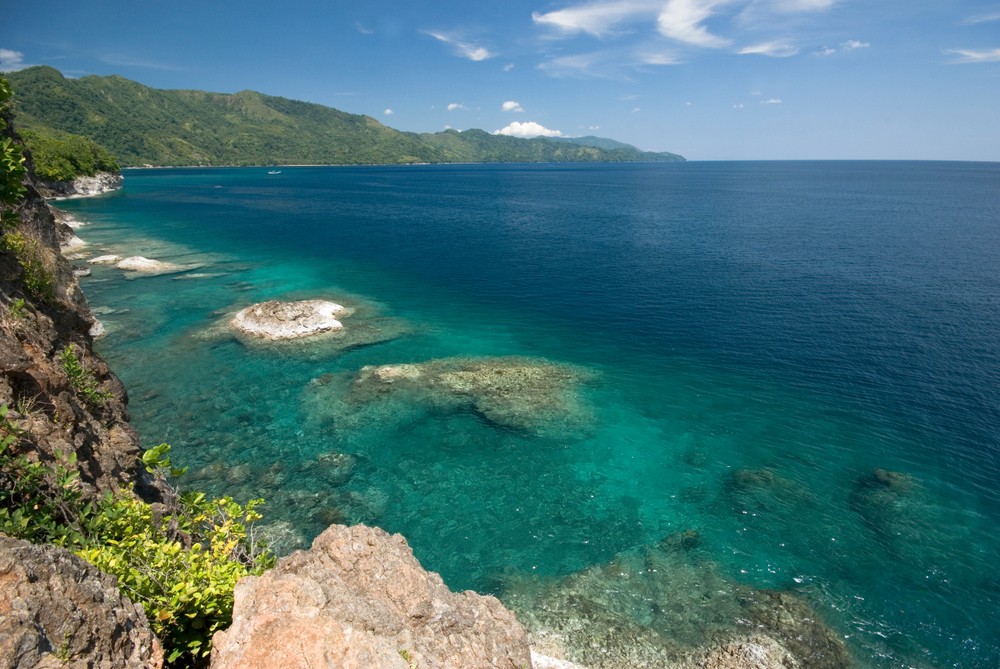Popular Reads
Top Results
Can't find what you're looking for?
View all search resultsPopular Reads
Top Results
Can't find what you're looking for?
View all search results8 great reasons to visit the forgotten Maluku Islands
Maluku Islands, one of Indonesia's hidden gems, has marine life that rivals world-famous Raja Ampat in Papua and yet few tourists go there.
Change text size
Gift Premium Articles
to Anyone
A
lso known as the Moluccas or Spice Islands, the remote Maluku Islands are a forgotten part of Indonesia. The islands are blessed with peaceful swathes of white sand, picturesque villages and interesting history.
This Indonesian hidden gem has marine life that rivals world-famous Raja Ampat in Papua and yet few tourists go there.
Discover this paradise destination before the rest of the world catches on. November to March is the best time to visit.
- Stroll along idyllic white-sand beaches
Maluku’s tucked away beaches and turquoise waters stretch as far as the eye can see, reminding you just how remote these islands truly are.
The Kei Islands’ Ohoidertawun Beach is one of the best beaches, offering a deserted tropical paradise that you won’t want to leave.
Make sure you save some time to explore the Kei Islands caves, rock carvings and ancient cave paintings while you’re there.
For expansive ocean views, Sangliat Dol beach on Yamdena Island — the largest of the Tanimbar Islands — is well worth visiting as well.
An old cobbled stone staircase leads from this palm-fringed beach to an ancient boat-shaped platform, offering mesmerizing ocean views.
Sitting between Timor and Papua, Yamdena is different from much of Indonesia, thanks to other ancient staircases in Sangliat Dol village and megalithic boats.
- Snorkel with manta rays in crystal-clear waters
Just about everyone loves manta rays, and Indonesia is one of the best places in the world to see these ocean giants. They will transfix you with their underwater acrobatics, grace and sheer size.
Manta Bay at Halmahera Island doesn’t have much coral or fish, but there are many manta rays at this snorkel site.
The depth at Manta Bay is just 10 meters and the water is crystal-clear, making it easy to spot mantas as you float on the warm water.
If you explore Halmahera’s coral reefs, mangrove forests and gentle lagoons, you’ll find an array of colorful reef fish, plus sea turtles and harmless reef sharks.
- Enjoy world-class diving far off the beaten path
For a more immersive experience at Halmahera Island, try scuba diving. This largest island in the Maluku group has dive sites that offer drift diving, wall diving, pretty coral gardens, WWII wreck diving and underwater volcanic formations.
You can look for tiny marine life under overhangs and on ledges, or swim-through natural rock formations bathed in sunlight from above.
This gem of Coral Triangle diving has over 600 fish species and around 450 coral species to discover, plus plentiful tiny seahorses, shrimp and other critters in the coral reefs.
Meanwhile, Halmahera Straits' hammerheads and reef sharks are not to be missed by fans of bigger marine life.
In short, diving in Halmahera is as spectacular as famed Raja Ampat but with fewer dive crowds.
- Trek dense rainforests and meet endangered parrots
Once you’ve had your fill of diving at Halmahera, put your hiking boots on and take to the hills. There is a range of Halmahera trails offering volcanic hiking and rainforests, plus mangrove swamps and coconut palm forests.
For some of the best hiking in the Maluku Islands, take a trip to Manusela National Park on Seram Island, which would especially attract birdwatchers as the rare Moluccas cockatoo and other endangered parrots can be spotted there.
There are also around 2000 butterfly species, over 100 other bird species and traditional villages to visit. However, you’ll likely need a guide and a permit to access this special park, which can be obtained from the tourist office in Seram’s capital Masohi.
- Discover Ternate, where cloves made history
The Ternate and Tidore Islands have a rich history as the only source of cloves in the world during the 18th century, a time when Arab, Chinese and Javanese merchants visited for this strong, aromatic spice. Along with nutmeg from the Banda Islands, cloves were an important part of the Spice Islands trading power.
Ternate is now the bustling capital city of North Makulu and is a modern hub with historic relics and a vibrant harbor perfect for people-watching.
Don’t miss the many food sellers lining the streets of Ternate’s business district if you’re a foodie. And to get your appetite going, hike up Gunung Api Gamalama volcano first and learn how cloves are grown and harvested.
- Visit colorful villages dotting the countryside
In contrast to its twin-like Ternate Island, Tidore is visited by few tourists.
Take a day trip there and you’ll find colorful traditional villages dotting the countryside and beautiful well-maintained gardens. Just remember to pack your camera for memories to take back home.
Read also: Three diving world records broken in Manado
- Swim over a huge lava pool teeming with life
On May 9, 1988, a violent eruption shook the Banda Islands. Molten lava spread across precious fringing reefs, destroying everything as it went.
Twenty years later and the molten lava is now covered in thriving table corals up to 4 m in size, supporting the Maluku’s typically diverse reef life.
Swimming over the hardened lava flow at Banda Neira is recommended. You are likely to be surrounded by hundreds of fish species and have the chance to see groupers, turtles and sharks.
Banda Neira is also a prime area for macro photography and for spotting delicate mandarinfish, reportedly the prettiest fish in the world, as they go about their mating ritual.
- Try your hand at ‘muck diving’
Have you heard of muck diving? This bizarre type of diving involves searching sands for impossibly small treasures such as strange-looking frogfish, technicolor sea slugs, miniature octopi and seahorses.
Ambon is muck-diving central, famed worldwide for its impressive and diverse macro life.
There are almost no currents in the harbor, where many of the best muck sites are found, allowing you to try muck diving and test your spotting skills with ease.
If you go Ambon diving, keep your eyes peeled for psychedelic frogfish.
Discovered in just 2009 and found only in Ambon, these fish boast stripes and swirls enough to make your eyes hurt.
***
The writer is a diver and writer with LiveAboard.com







